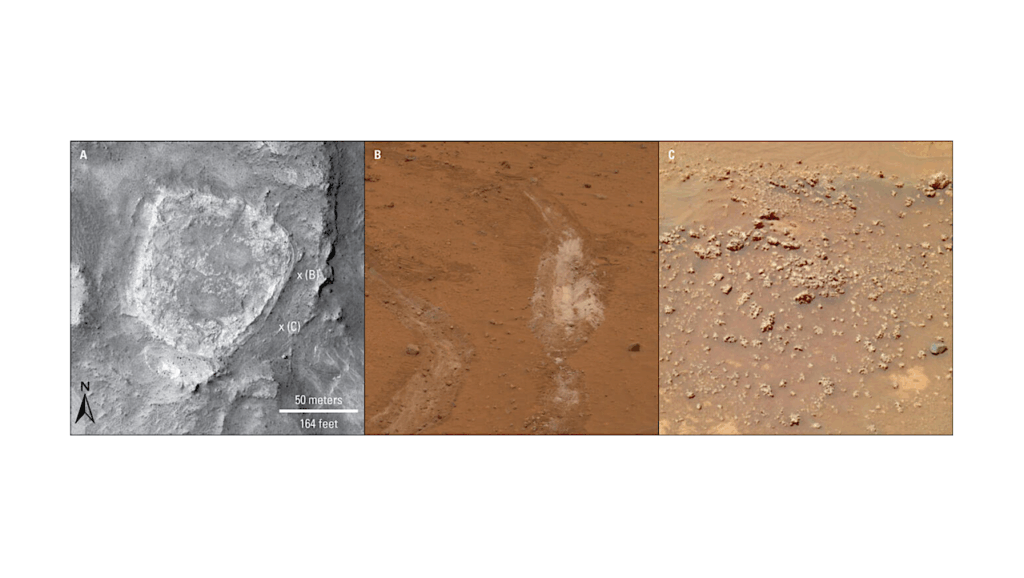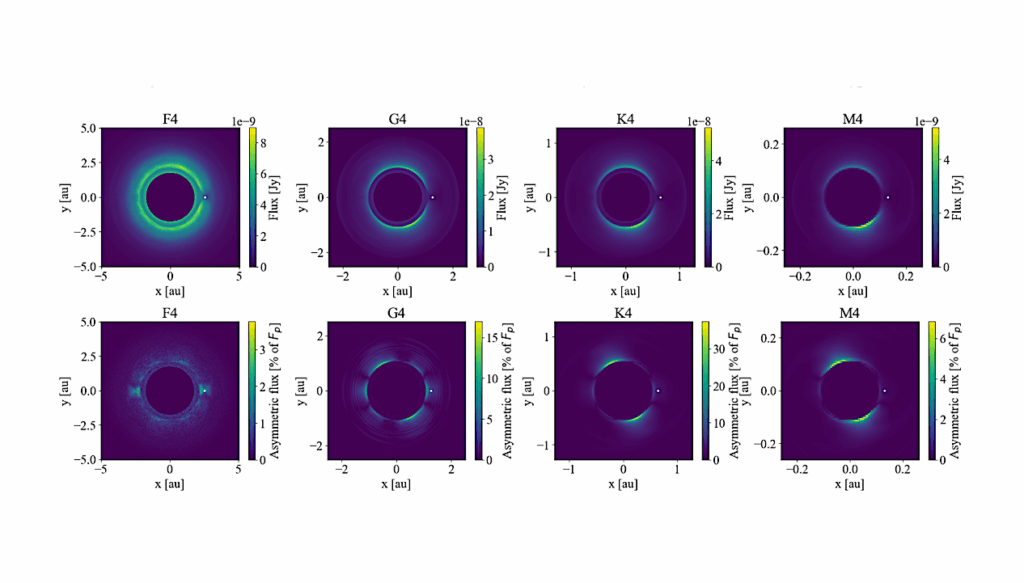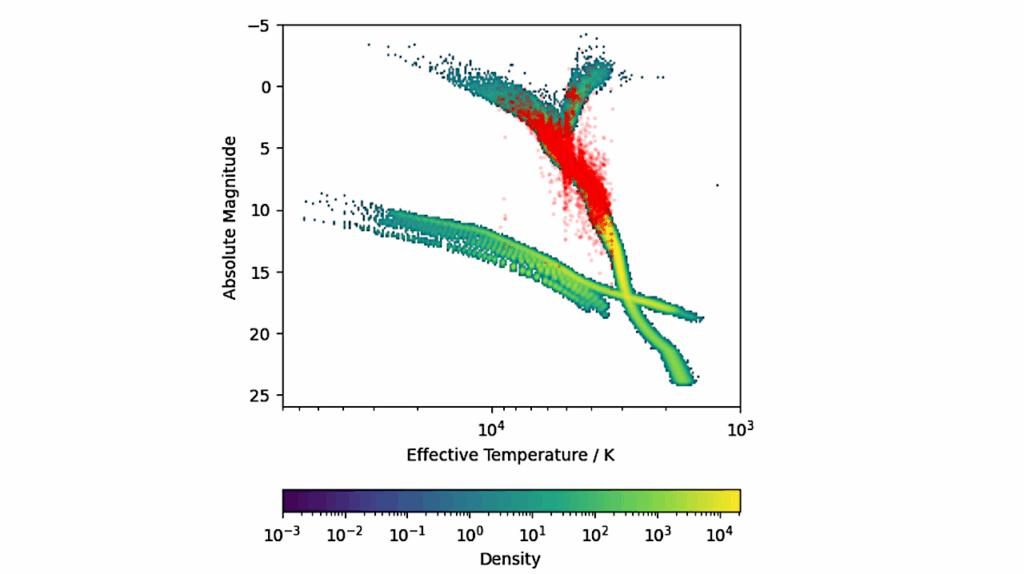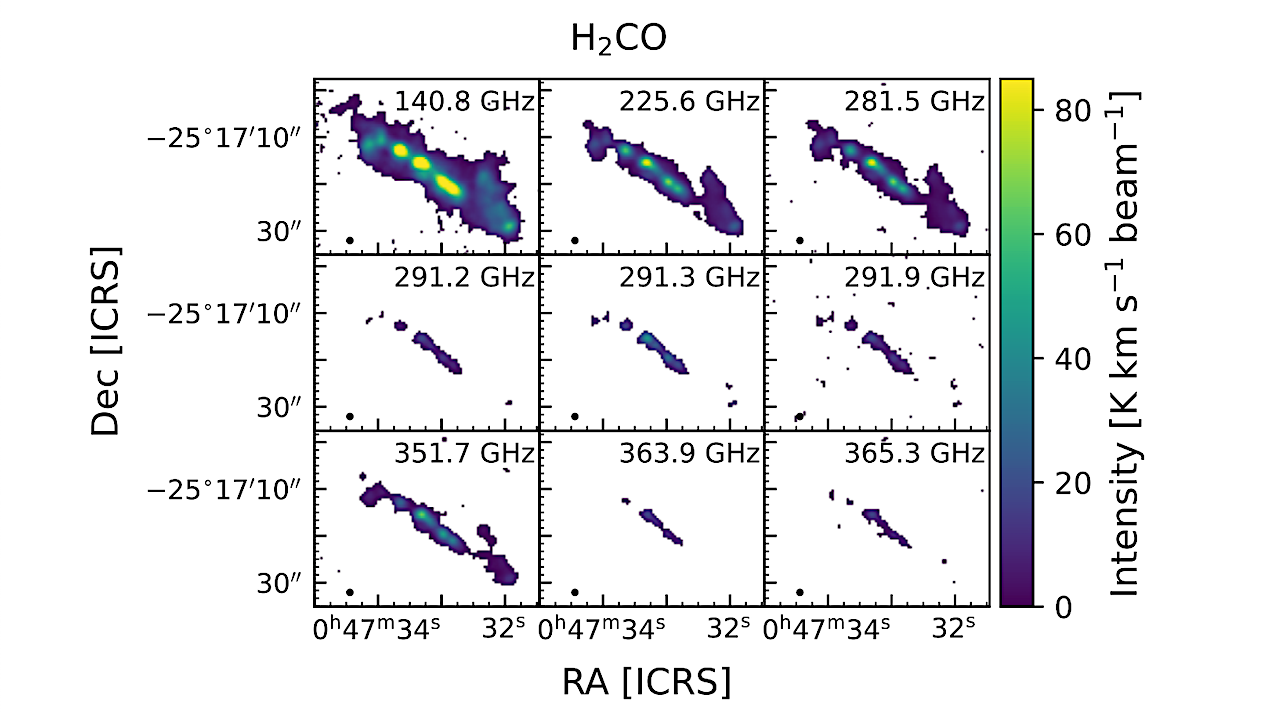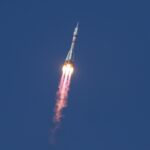Now Reading: Modern Earth-like Chemical Disequilibrium Biosignatures Are Challenging To Constrain Through Spectroscopic Retrievals
-
01
Modern Earth-like Chemical Disequilibrium Biosignatures Are Challenging To Constrain Through Spectroscopic Retrievals
Modern Earth-like Chemical Disequilibrium Biosignatures Are Challenging To Constrain Through Spectroscopic Retrievals
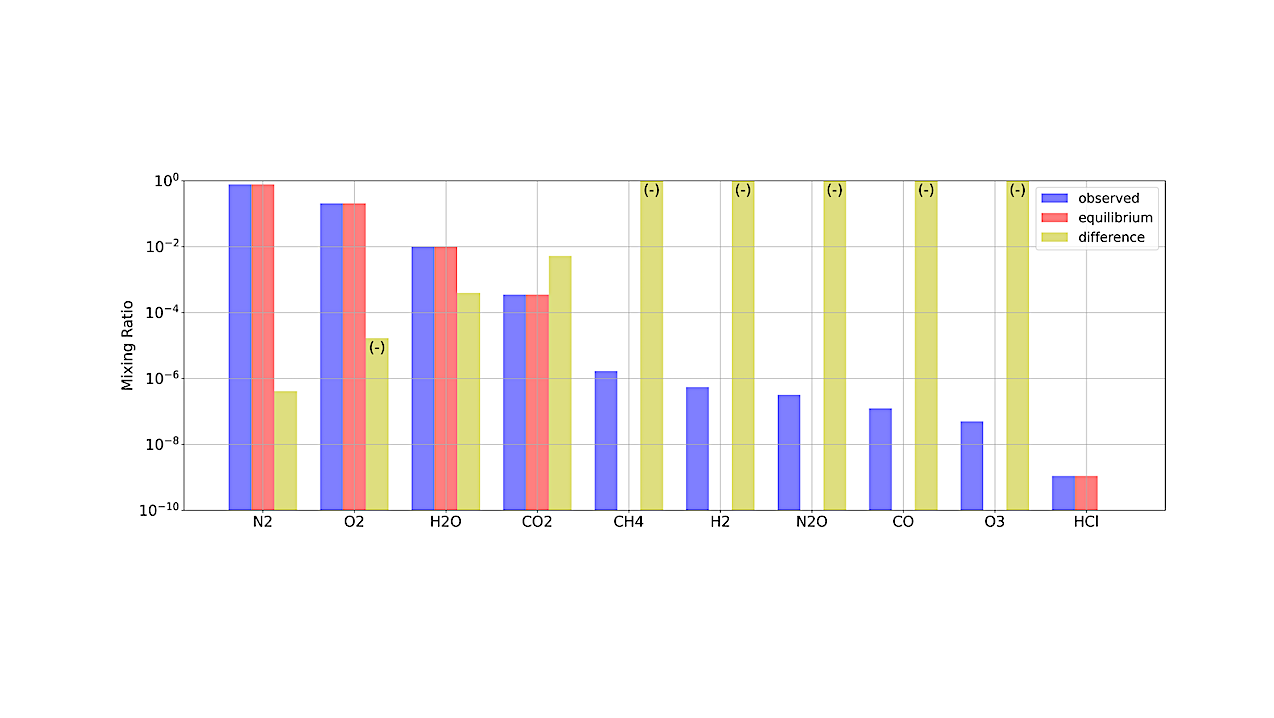

A modern Earth thermodynamic calculation using the Gibbs free energy thermodynamics model. Each species included in the calculation is listed along the bottom with their respective mixing ratios on the y-axis. The blue bars represent the observed abundances for each species and the red bars indicate the equilibrium abundance of each species. The yellow bars show the fractional difference in between the observed and equilibrium abundances, normalized by the observed values. The “(-)” annotations indicate a decrease in mixing ratio takes place in order to reach equilibrium. This calculation was done at a pressure of 1 bar and a temperature of 288 K. — astro-ph.EP
Robust exoplanet characterization studies are underway, and the community is looking ahead toward developing observational strategies to search for life beyond our solar system.
With the development of life detection approaches like searching for atmospheric chemical species indicative of life, chemical disequilibrium has also been proposed as a potentially key signature for life. Chemical disequilibrium can arise from the production of waste gases due to biological processes and can be quantified using a metric known as the available Gibbs free energy.
The main goal of this study was to explore the detectability of chemical disequilibrium for a modern Earth-like analog. Atmospheric retrievals coupled to a thermodynamics model were used to determine posterior distributions for the available Gibbs free energy given simulated observations at various noise levels.
In reflected light, chemical disequilibrium signals were difficult to detect and limited by the constraints on the CH4 abundance, which was challenging to constrain for a modern Earth case with simulated observations spanning ultraviolet through near-infrared wavelengths with V-band SNRs of 10, 20, and 40. For a modern Earth analog orbiting a late-type M dwarf, we simulated transit observations with the James Webb Space Telescope Mid-Infrared Instrument (MIRI) and found that tight constraints on the available Gibbs free energy can be achieved, but only at extremely low noise on the order of several ppm. This study serves as further proof of concept for remotely inferring chemical disequilibrium biosignatures and should be included in continuing to build life detection strategies for future exoplanet characterization missions.
Amber Young, Tyler Robinson, Joshua Krissansen-Totton, Edward Schwieterman, Giada Arney, Gerrick Lindberg, Cristina Thomas
Comments: 25 pages, 17 figures. Accepted to ApJ. Accessible figure data: https://zenodo.org/records/15485518 Python Thermodynamics Model: https://github.com/Bellatrix12/Python_Equilibrium_Code
Subjects: Earth and Planetary Astrophysics (astro-ph.EP)
Cite as: arXiv:2505.16231 [astro-ph.EP] (or arXiv:2505.16231v1 [astro-ph.EP] for this version)
https://doi.org/10.48550/arXiv.2505.16231
Focus to learn more
Submission history
From: Amber Young
[v1] Thu, 22 May 2025 05:02:48 UTC (13,407 KB)
https://arxiv.org/abs/2505.16231
Astrobiology,
Stay Informed With the Latest & Most Important News
Previous Post
Next Post
-
 012024 in Review: Highlights from NASA in Silicon Valley
012024 in Review: Highlights from NASA in Silicon Valley -
 02Panasonic Leica Summilux DG 15mm f/1.7 ASPH review
02Panasonic Leica Summilux DG 15mm f/1.7 ASPH review -
 03How New NASA, India Earth Satellite NISAR Will See Earth
03How New NASA, India Earth Satellite NISAR Will See Earth -
 04And Thus Begins A New Year For Life On Earth
04And Thus Begins A New Year For Life On Earth -
 05Astronomy Activation Ambassadors: A New Era
05Astronomy Activation Ambassadors: A New Era -
06SpaceX launch surge helps set new global launch record in 2024
-
 07Space Force plans new ‘Futures Command’ amid pressure to speed up modernization
07Space Force plans new ‘Futures Command’ amid pressure to speed up modernization













